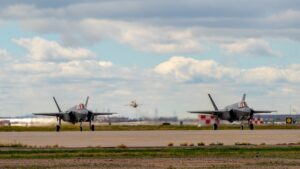
Lockheed Martin [LMT] said on March 6 that it has resumed flight acceptance testing in Fort Worth, Texas of the company's F-35 fighter. "We resumed F-35 production flight operations today following an F135 engine mitigation action," the company said. "Safety remains our top priority as we continue to produce the world’s most advanced fighter aircraft." Last week, the F-35 Joint Program Office (JPO) said that it had directed a fleetwide retrofit for F-35As, Bs, and Cs to mitigate any future…














